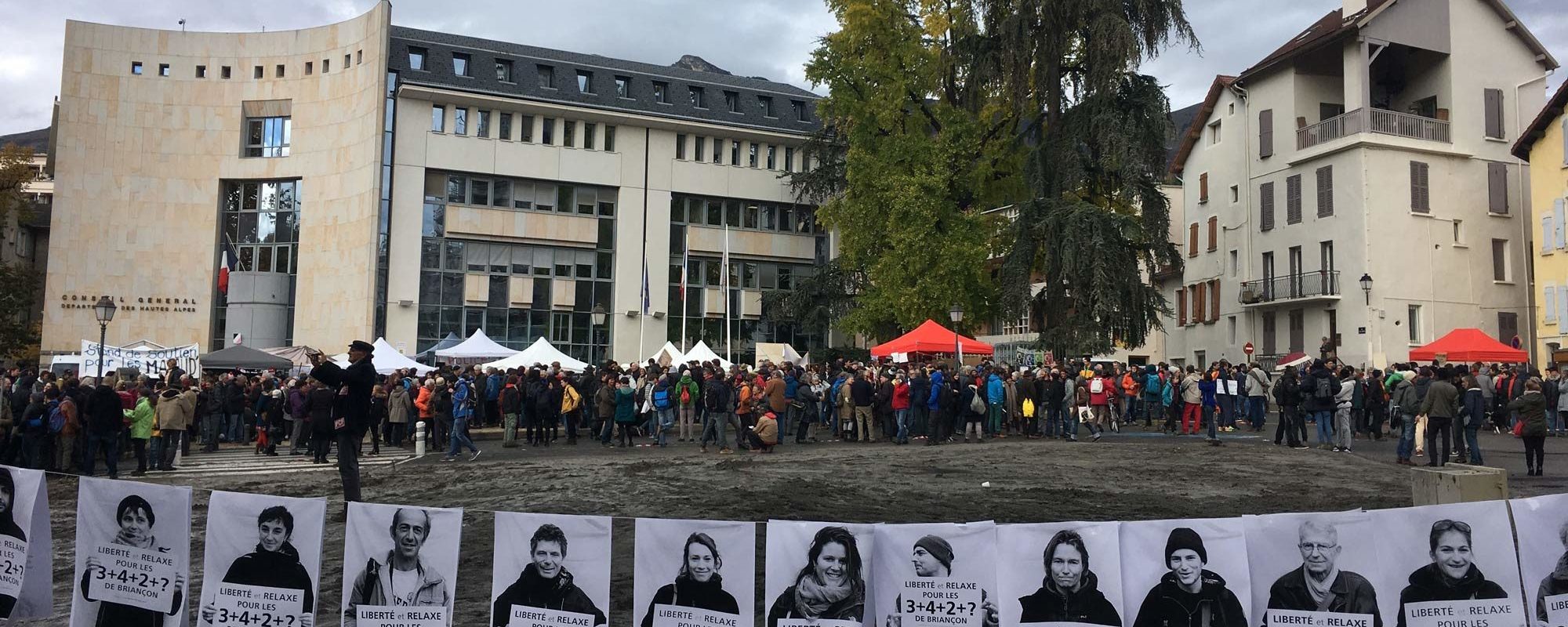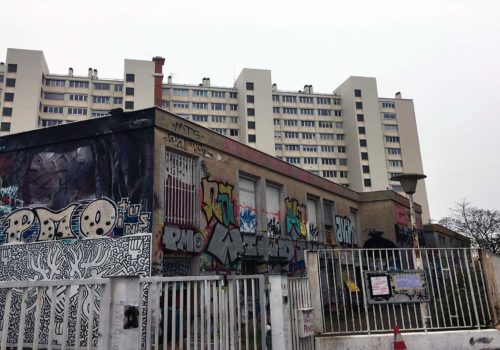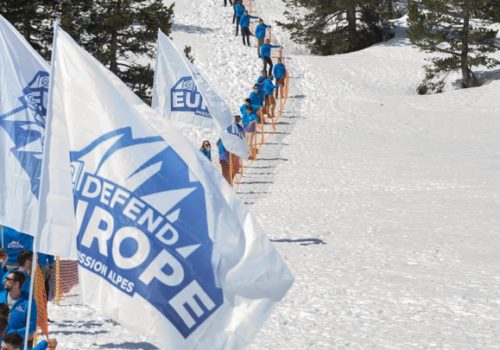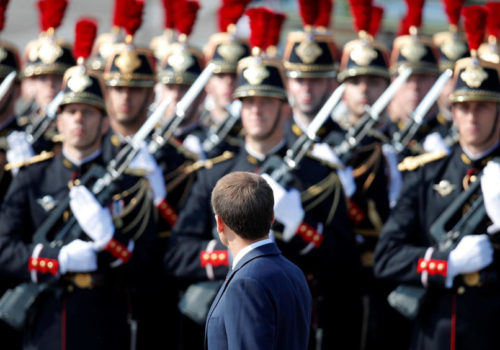MARSEILLE, France — It was still dark when I arrived at the grand staircase of the Gare St. Charles, the city’s train station. I stood alone in the strange, early-morning calm—a contrast with the typically frenetic pace of the city’s streets. I had carefully followed instructions: The buses would leave at 5:30 a.m., a girl named Sara had told me over the phone.
Afraid to be late, I arrived at 5:09. I waited alone for fifteen minutes before others slowly trickled in, already rolling their loose-leaf-tobacco cigarettes. I followed the group—mostly scruffy twenty-somethings in worn sweatshirts, but also folks in their 60s and 70s—into three buses that headed toward Gap, an Alpine town about two hours from Marseille. That’s where seven migrants’ rights activists, dubbed the “Briançon 7,” were set to appear in court. They faced potential 10-year prison sentences and fines of up to $856,000, accused of having allegedly facilitated the illegal crossing of some 20 migrants in April across the Alps from Italy.
Activists and advocacy groups had organized a rally to protest the prosecution, and I would be traveling with around a hundred of them heading over from Marseille. Others came from Toulouse, Lyon, Grenoble and elsewhere in southern France. The scale of the mobilization hinted at the trial’s significance: the latest example of the widening gap between French law and values, and a glimpse into the coming ideological battles over how to best handle migration.
One of the organizers, in his late twenties and wearing a black hoodie, went around my bus telling everyone that if the police stopped us, we were to collectively refuse to show identification. There might have been some people on board who were undocumented, he said, and we were to show solidarity with them. (I also think the group generally got a thrill from the prospect of collectively refusing a cop’s request—that was the general vibe.)
Cruising down the highway around an hour later, we reached a police post, and a group of gendarmes flagged us down to pull over. One in full camouflage gear got on the bus. When he inquired why we were heading to Gap, everyone responded “tourism,” in unison, as if already prepared to lie. He smirked and, as anticipated, asked for our IDs. He scoffed at our collective refusal but didn’t seem too bothered: Apparently, the next-best thing would be a drug-sniffing dog, which indeed managed—not so surprisingly—to find what it was looking for.
We waited another 40 minutes while the police searched a young couple, and then led another dog—this one trained to sniff for explosives, the gendarmes told us—onto our bus. It seemed increasingly clear that the cops, fully aware that we weren’t headed to Gap for “tourism,” were simply trying to delay our arrival at the trial.
The dogs found no explosives. It was finally time to go.
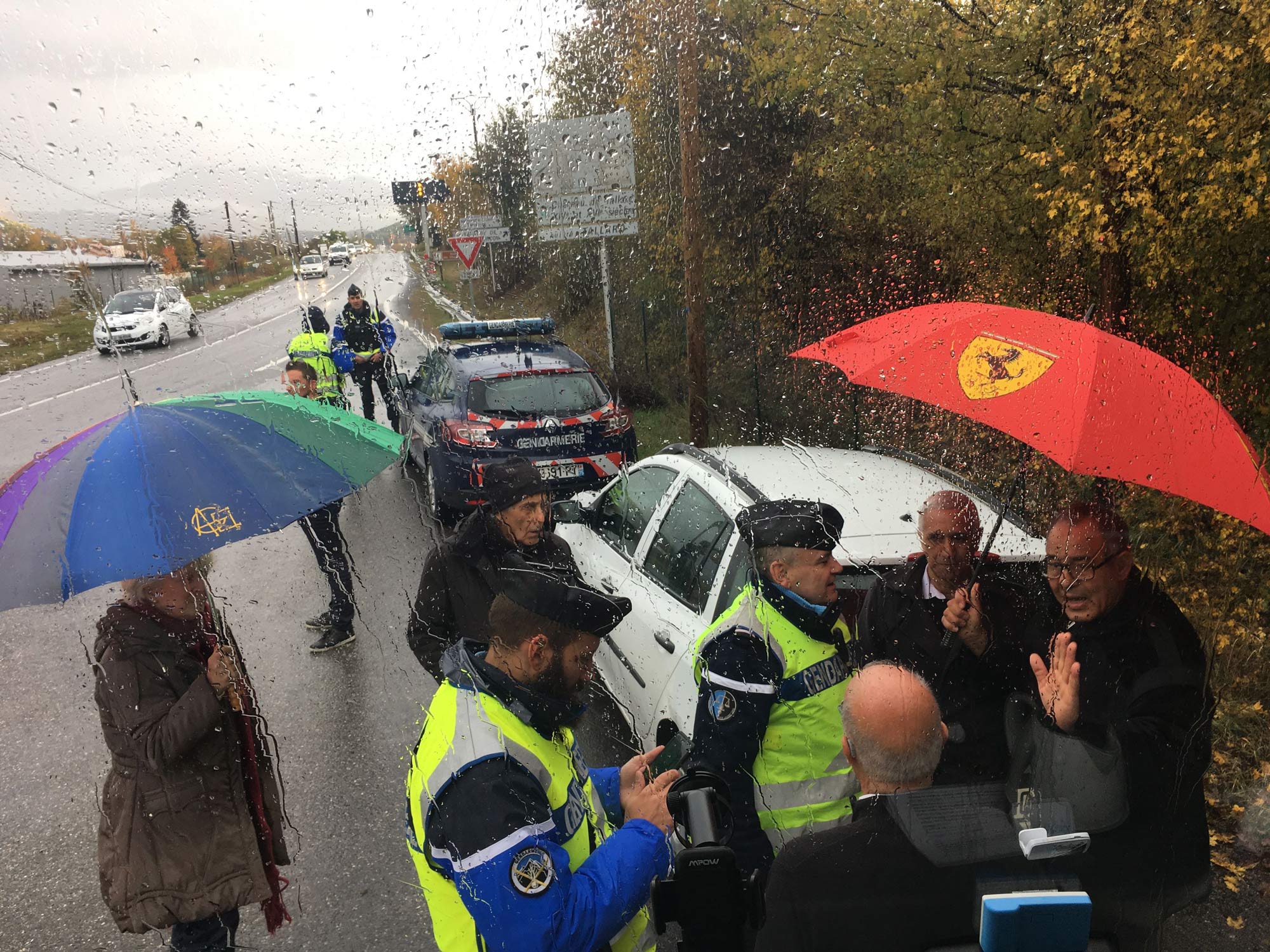
Solidarity on trial?
The police were at least successful in delaying us; we arrived in Gap more than an hour into the trial. Some 10 officers blocking the courthouse entrance told me it was full when I tried to enter. The surrounding streets were cordoned off—police vans lined the vicinity, giving the quiet, midday lull an eerie edge. After my attempted negotiation tactics proved ineffective, I decided to explore the rally outside.
It was somewhere between a protest and a party, tinged with the outrage of people who still like to have a good time. There were hundreds—the associations that organized the event said around 1,000 over the course of the day—selling t-shirts and posters, setting up crepe stands, preparing troughs of donation-based potato curry; there was even a makeshift pizza oven. Volunteers stood on a platform reading testimonies from migrants and refugees, stories of police brutality at the border that I would soon learn were common for so many passing into France from Italy.
I managed to squeeze my way into the courthouse around noon, taking advantage of the cops’ lunch break. As everyone settled back in to restart the trial, I heard mutterings that the police downstairs had stopped letting people in, saying the room was already packed. I looked around, and it was hardly full.
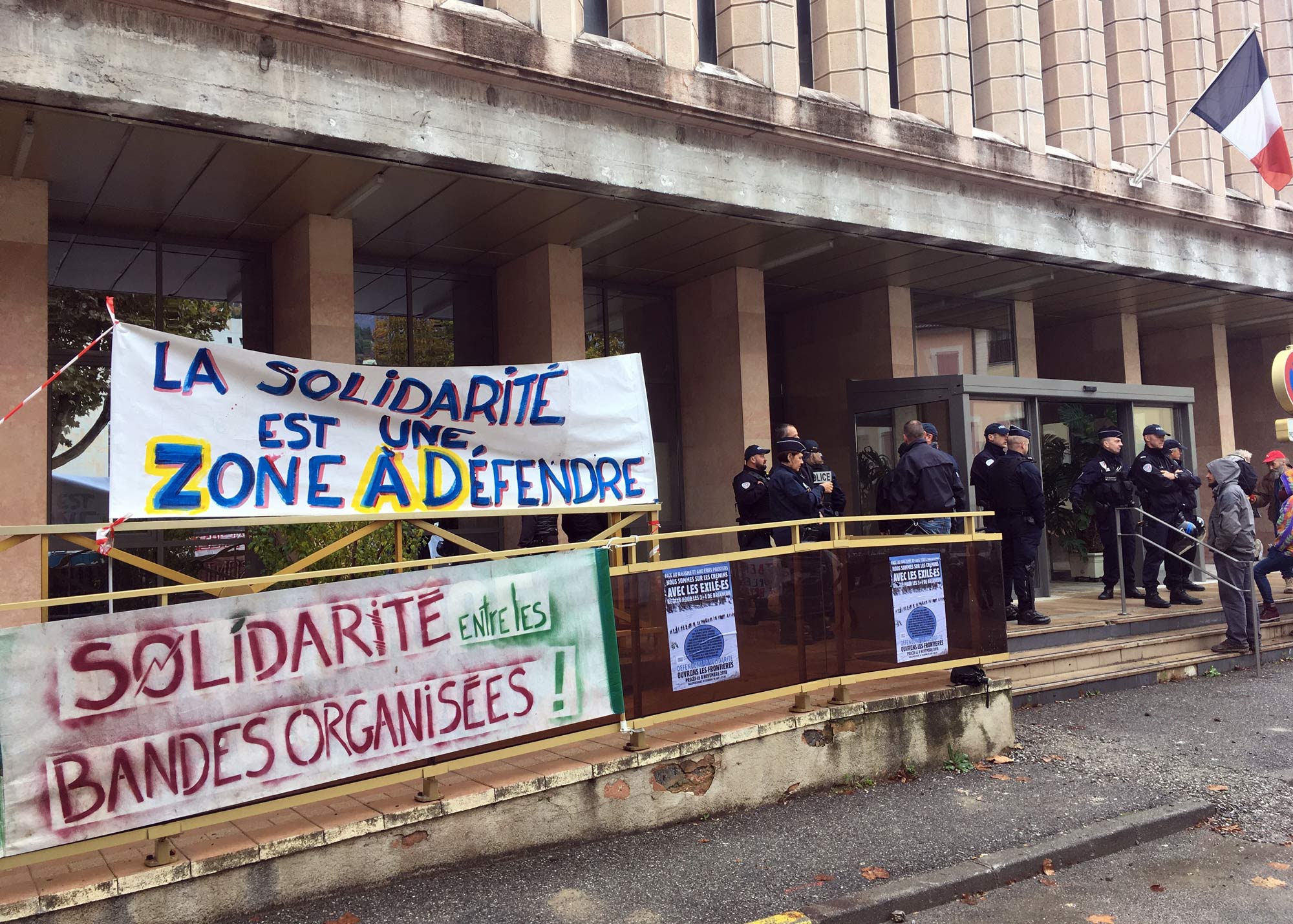
The optics were telling. The five defendants—two didn’t come—seemed dressed to show how they felt about the trial. Twenty-two-year-old Lisa Malapert wore a patterned dress and a brown leather fanny-pack; Théo Buckmaster, 24, sported a tee-shirt and rattail; Matthieu Burellier, 35, had scraggly hair and wore a light-green zip-up and a small hoop on each ear; Jean-Luc Jalmain, 52, had dreadlocks and a tee-shirt that said “fiché S, S pour solidarité”—a play on the so-called S List, the government’s log of potential security threats to France; Bastien Sauffer, 26, had neatly coiffed hair but an untucked button-up shirt; and Benoît Ducos, 49, the most polished, still looked dressed for a hike in the mountains. They sat facing five police officers in uniform, in a caricatured display of the system and its detractors.
Others before the Briançon 7 have faced criminal charges for assisting undocumented migrants. A 1938 law bans not only facilitating “illegal entry” but also aid for irregular residency or circulation in France. The law was progressively tweaked to include exemptions for humanitarian intent. Last year, Cédric Herrou, an olive farmer, received a $3,200 fine and a suspended sentence for sheltering migrants in his makeshift home in Breil-sur-Roya, near the Italian border in southern France. In July, the country’s highest court determined that “any act of aid provided for humanitarian purposes”—for either residency or circulation within France—could not be illegal. Banning such activities would violate the French principle of “fraternity.”
However, the exemption did not apply to the question of entry, and so four months after that landmark decision, the Briançon 7 faced possible prison time for allegedly helping migrants enter illegally in April during a march from the Italian border city of Clavieres to Briançon.
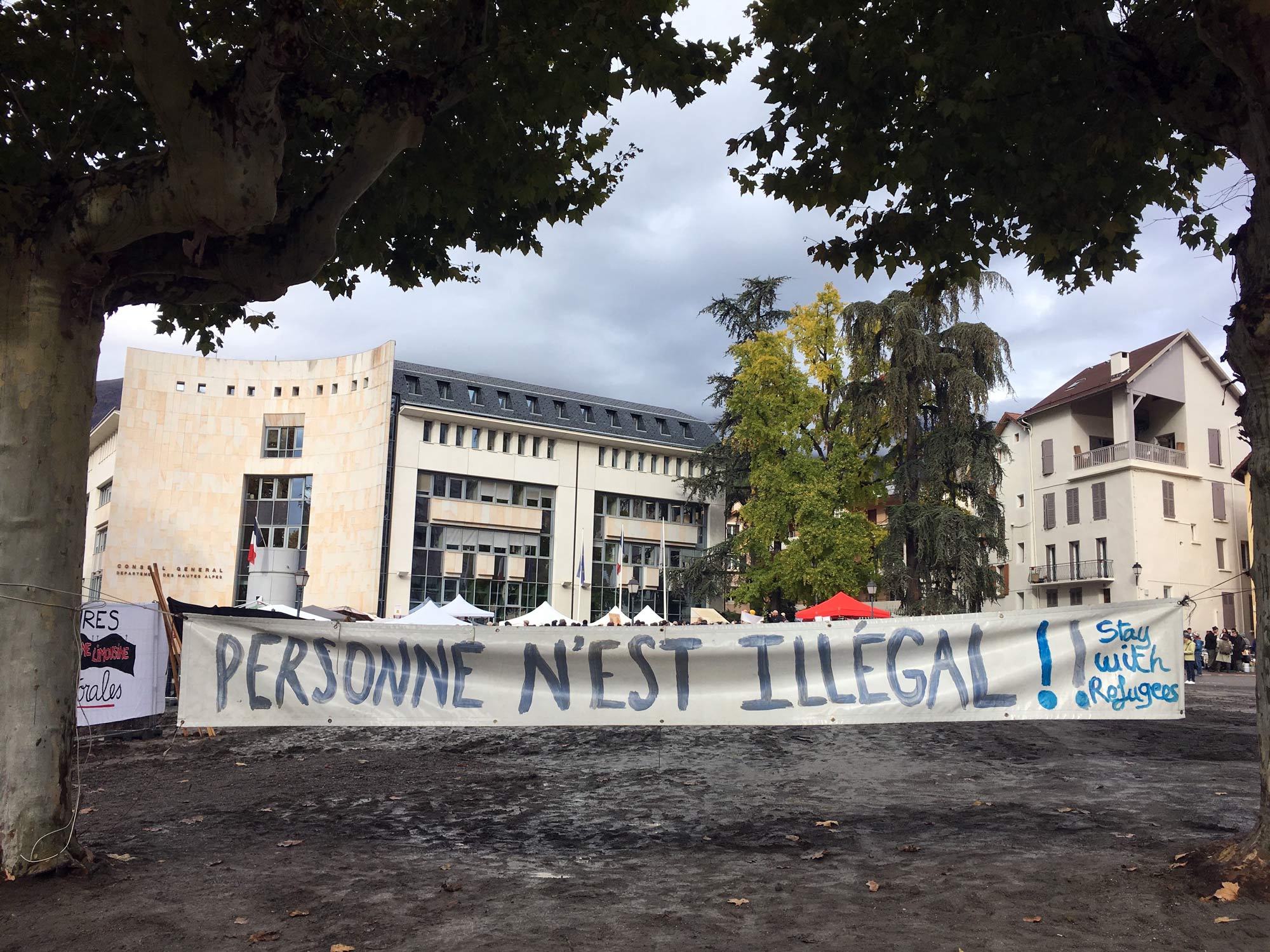
That’s not how they see it. Understanding the trial and its stakes requires looking back at just what was happening in the Alps in April, when some hundred members of Génération Identitaire—a far-right group with a self-described mission of protecting “European identity,” which they consider a “declaration of war”—blocked the French-Italian border, in an operation they called “Defend Europe.” The activists wore matching blue uniforms and arrived with trucks and helicopters, which they used to patrol mountain trails. They reportedly cooperated with the police and even posed as border cops during interactions with migrants, which would constitute a crime.
The Briançon 7 say their march was a direct response to Defend Europe and the general militarization of the border. In October, Amnesty International and a host of other advocacy groups documented systematic abuse of migrants’ rights, including violence, racist insults and routine returns to Italy without examining individual cases—including of those claiming to be minors.
If there were undocumented migrants present during their protest—the police have identified only one among the “approximately 20” they referenced throughout the trial—they say that wasn’t their fault. “My intention wasn’t to cross the border. If the protest drove us to [do so], I followed the protest,” Malapert, 22, said indignantly. “The intention wasn’t to help anyone, in any situation, cross the border,” she added. “Everyone has the right to protest.” The allegations, she went on, are based on racial profiling: those “approximately 20” alleged migrants, she says, were just fellow protesters who happened to be black. I was seated in the audience next to her mother—she had introduced herself as soon as I sat down—who beamed with some combination of pride and terror.
‘In winter, they arrive basically frozen. In summer, they’re exhausted and dehydrated. Or they have broken bones or twisted ankles from fleeing the police.’
The judges will release a final decision on Dec. 13, but the prosecutor recommended six-month suspended sentences for five, and four-month prison sentences with eight months suspended for the remaining two. The trial lasted until after midnight, but my bus was heading back to Marseille at 7 p.m., and when I left, the atmosphere was tense. The defendants insisted that the prosecutor had ignored the context—a far-right, overtly racist group trying to supplant the responsibilities of the border police, amid a rightward shift in Europe that has led to the closing of borders—in order to undermine a spirit of solidarity with migrants that has developed among the residents of Briançon over the past several years.
Although France hasn’t yet succumbed to populism or the far right, migrant rights advocates say that President Emmanuel Macron’s policies leave much to be desired. “We’ve seen such a spike in brutal violence, in theft, on the behalf of border police,” Michel Rousseau, the director of Tous Migrants, a Briançon-based group, told me. “I don’t think anyone can say this rise in institutional violence is completely separate from the phenomena we’re seeing around the world, from the United States to Brazil.” When the state “tolerates far-right militias who prevent migrants from passing,” he added, referring to Defend Europe, “it sends the signal that such behavior is possible.”
But Macron’s France is neither the America of Donald Trump nor the Brazil of Jair Bolsonaro, and the action of the border police can’t be exclusively attributed to his leadership. Because he only took office in May 2017, it’s difficult to measure the direct impact of his policies on immigration, but the numbers don’t tell an entirely dismal story, either. In 2017, 43,000 asylum seekers were granted refugee status, among over 100,000 who sought such protection, a 17 percent increase from 2016. And in a 13 percent increase from 2016, France gave 262,000 residency cards in 2017—to foreigners ranging from economic migrants and refugees to foreign students.
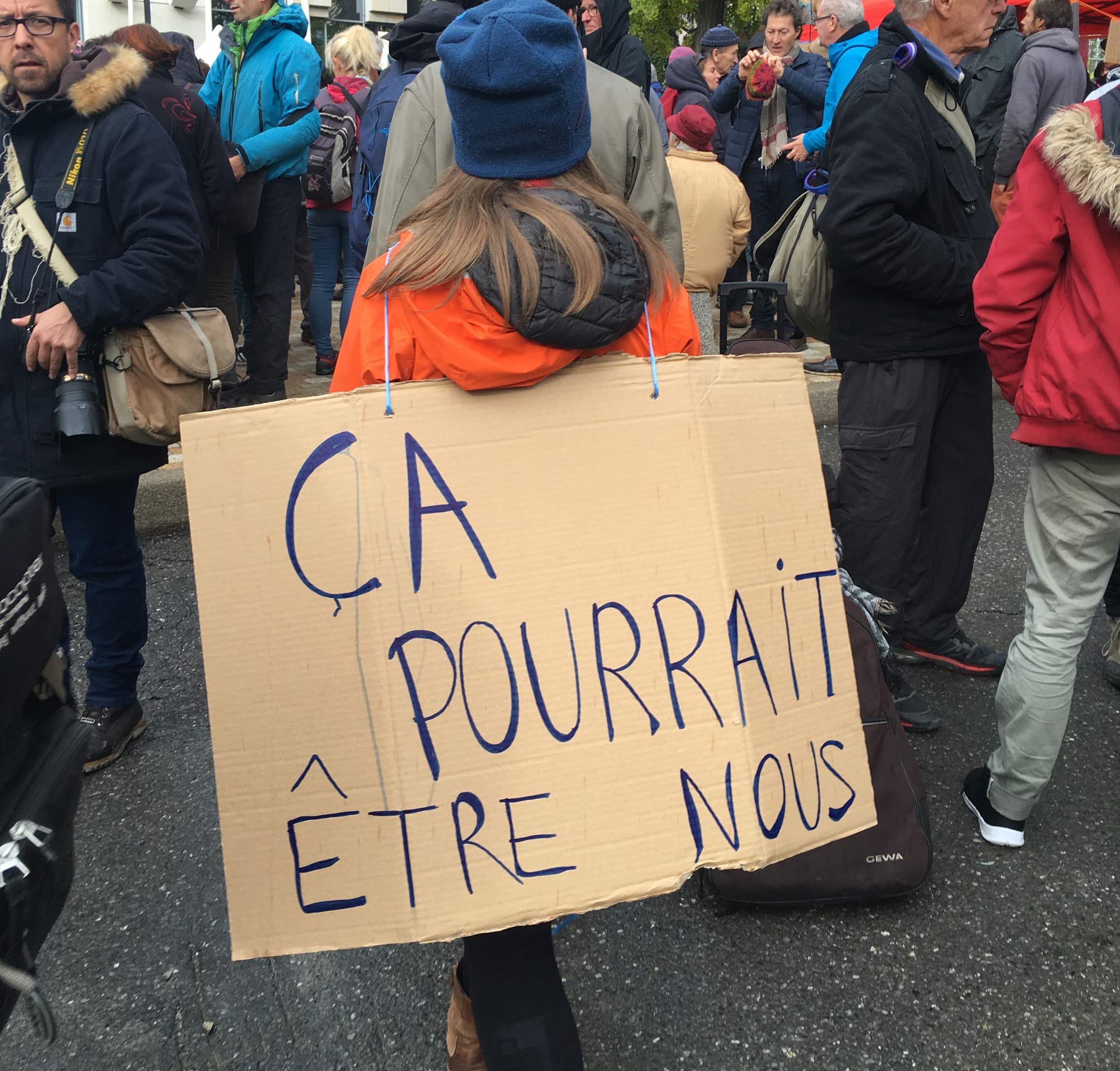
That would be consistent with Macron’s pledge to crack down on undocumented immigrants—a number that, by definition, is impossible to measure but that the Interior Ministry estimated to be around 300,000—but better integrate those legally residing in France. Indeed, over the summer, the administration doubled the number of free French-language lessons available to migrants, from 200 to 400 hours, and expanded civic-training courses—which offer practical advice on employment and housing, as well as lessons on French society and culture—from 12 to 24 hours.
At the same time, deportations have also spiked under Macron, with a 20 percent increase in 2018, and migrants’ rights advocates describe a hardline approach that will also hurt asylum seekers. They point to a law taking effect in January that curbs asylum rights, and the government has overseen other controversial policies critics say should make it clear that the French president isn’t necessarily the liberal reformer he bills himself to be.
After the Alps, a Refuge
I met Benoît Ducos, one of the Briançon 7, in front of the Refuge Solidaire on a windy day in Briançon. It’s a drafty, two-story building—formerly a police base—just around the corner from the train station, where new arrivals can find a place to sleep and eat. Faced with the reality of increasing migration beginning in 2015, the city authorized its use as a makeshift welcome center, and it has temporarily housed around 6,500 people since it opened in July 2017.
Ducos is tall with sharp features and speaks firmly, almost breathlessly, when he’s making a point. He was at the Refuge to take testimonies from the 40 migrants who had arrived that day. I followed him into a large, cold room, where a group of young men—the majority from sub-Saharan Africa, plus one from Morocco, another from Algeria and a family from Serbia—gathered.
Ducos wanted to know if any of the men had had violent run-ins with the police. He introduced himself. “I don’t work for the police or the state,” he said slowly, explaining that he was a volunteer, there to help. He wanted to share the migrants’ experiences with lawyers who would, he assured them, defend their rights. “I know that you’ve all made it past the border,” he said. “But you’re not finished with it—you’ll encounter it again and again, everywhere in France.”
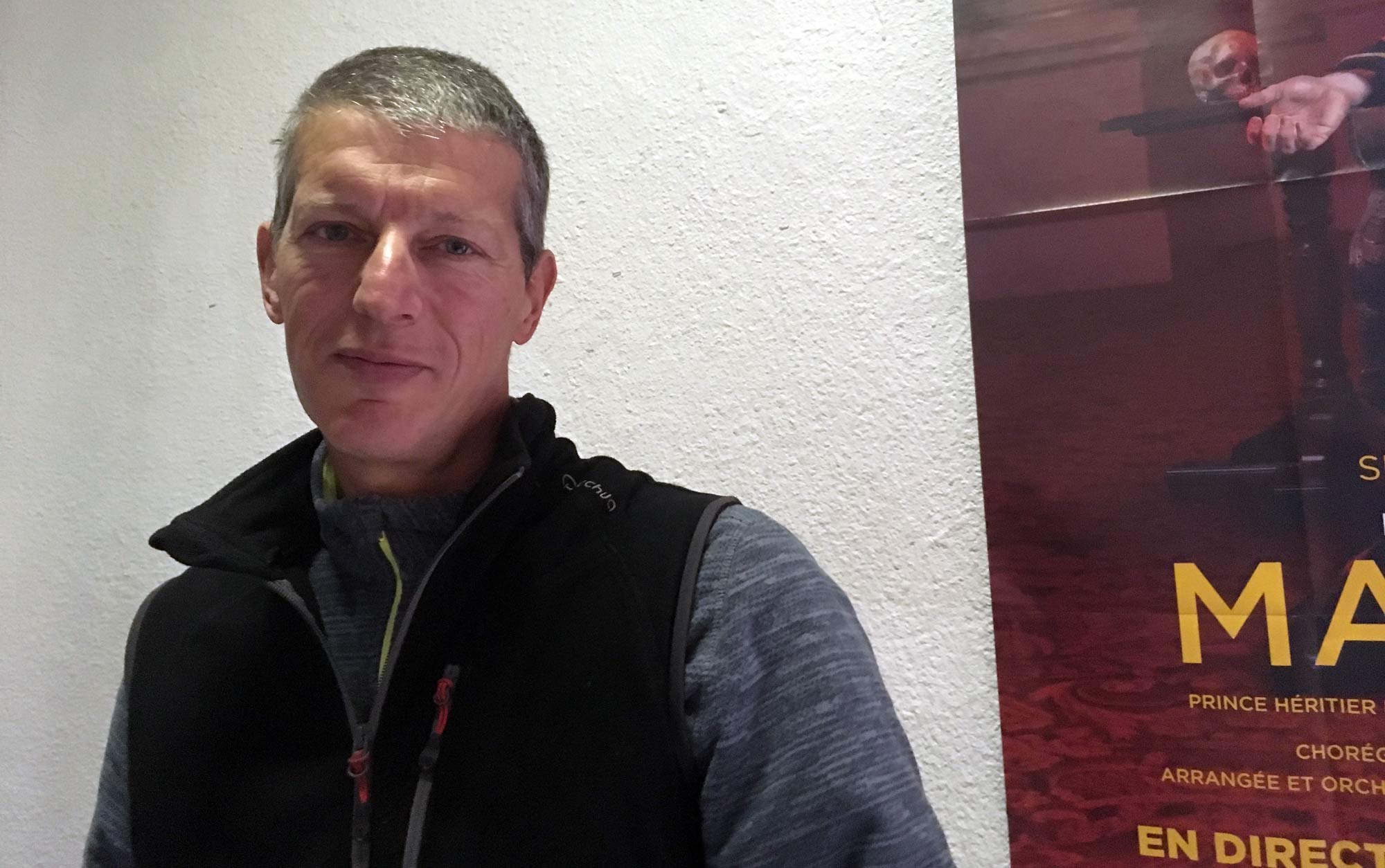
That had been a good day, he told me—the men he talked to were tired, but didn’t report any altercations with the police. A group of migrants crowded around him, telling their stories and asking for advice about what to do next. One, from Guinea, eagerly said that he wanted to go to Paris.
“Do you know anyone there? No?” Ducos said, as the young man shook his head. “I want you to think long and hard, then, before you go. Take a few days here to recover and then decide,” he advised, as the man’s face dropped. “Because you think Paris will be one thing, but you’ll get there and you’ll be on the street, and people will take advantage of you.” He had seen too many get sucked into sex trafficking or drug dealing, he warned.
Pauline Rey, a soft-spoken 23-year-old who helps run the refuge, showed me around. She grew up in Briançon, and when migrants started arriving through the Alps in 2015—bringing horror stories with them—she wanted to do something to help. In March 2016, a 27-year-old from Mali who crossed the mountains trying to reach his family in Paris had to have both feet amputated. “That was an electro-shock,” Rey told me. “So we started a citizen movement.”
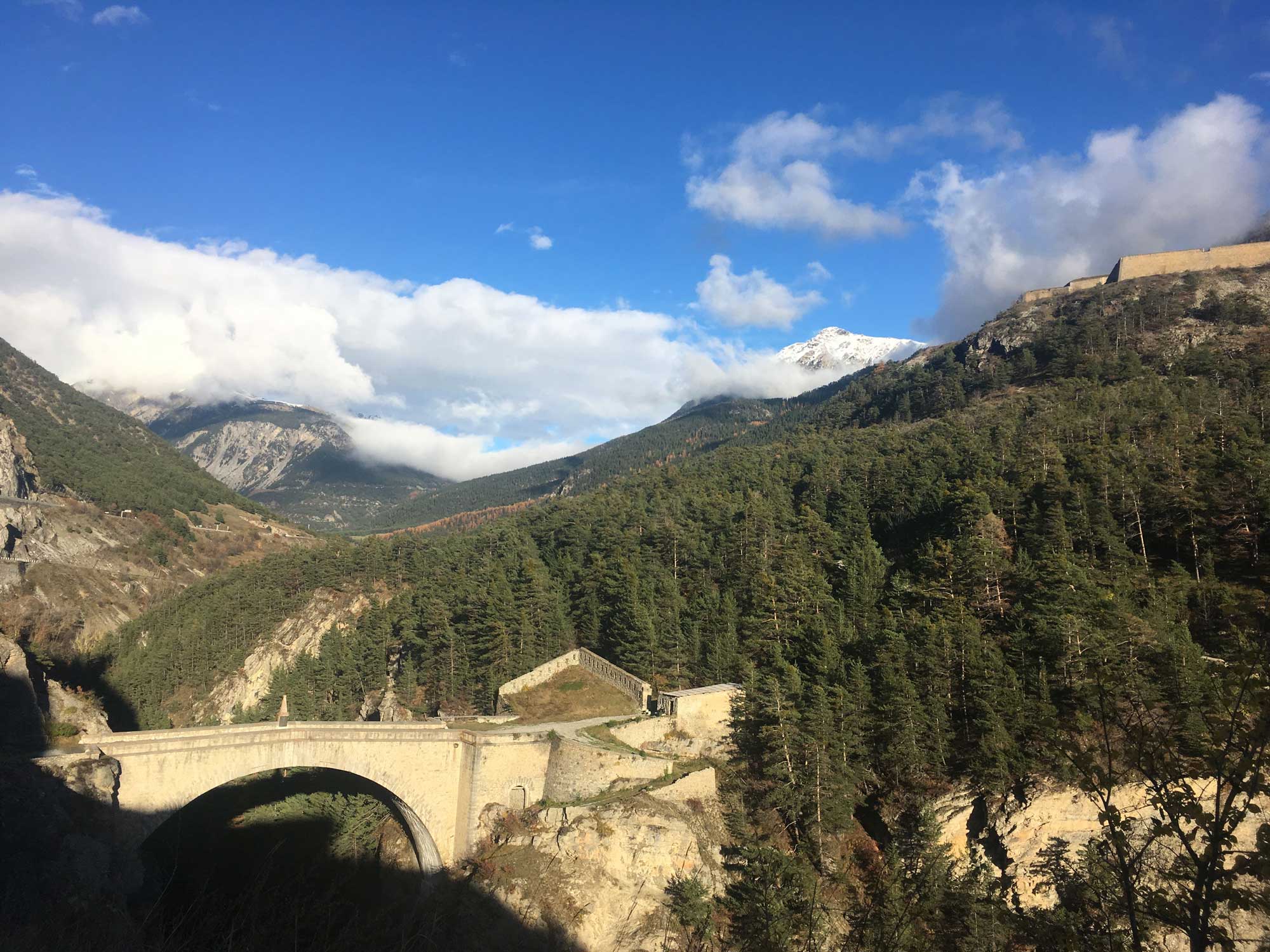
Around half of the daily arrivals say they’re minors, and 80 percent are under 25. In winter, the refuge welcomes some 20 a day, but in the summer it can be more like 140. “We don’t turn anyone away,” she told me, because outside the refuge migrants are more likely to run into the police, increasing their risk of being returned to Italy and potentially deported from Europe. She showed me a small room where people can receive medical treatment. “In the winter, they arrive basically frozen; in the summer, they’re exhausted and dehydrated. Or they have broken bones or twisted ankles from fleeing the police,” Rey said, showing me medical supplies the center receives through an agreement with a local hospital.
Refuge Solidaire’s goal is to help shelter and orient migrants, Rey told me. “We’re not political—we’re not the ones saying, ‘we need to open the borders.’ Because when there are kids knocking at your door, you’re not thinking about politics.”
Still, the trial in Gap gave her chills, showing that “today it’s politically more feasible to be against welcoming migrants than for it.” Rey lamented what she considers unequal treatment between the Briançon 7, facing potential prison sentences, and Génération Identitaire, who have suffered no legal reprimands. “If they’re trying to scare us, however, they’ve failed. Because when someone is hungry and cold, we’re going to help them, even if they try to do everything to incriminate us.”
“Enough is enough”
Rey’s humanitarian impulse isn’t universal. But locals generally support the refuge’s work, at least because it “keeps Briançon attractive,” she said, by limiting migrants’ visibility in a town that thrives on tourism. On a stroll up a steep, cobblestone street—quiet and practically deserted during the off-season—I approached a group enjoying a midday drink. Jeanne Tournès, a 62-year-old woman with the husky voice of a lifelong smoker, said that despite the influx of arrivals over the past several years, the city hasn’t seen much of a change. “We don’t see them,” she told me. “But there’s a sense that for them, it’s getting worse—that there’s no space for them to sleep, and they need medical care.” Her friend, Paul Brener, 76, took a harsher tone. “They come and need to be treated at our hospital, but our services are already about to crack,” he said, adding that, as it is, Italians from small border towns seek treatment at Briançon’s hospital. “There aren’t easy answers,” Tournès suggested timidly.
An 18-year-old boy lingering by the entry with an espresso and a cigarette chimed in. “All winter I’d see them coming through the Alps—they’d be hiking through the snow, barefoot. When you see people like that, you feel obligated to help them,” he said, nevertheless adding that he never did himself. He was skeptical about allegations that border police were using needless violence and violating migrants’ rights. “They’re just doing their jobs, following orders,” he said. “I don’t think it’s fair to say they’re doing anything out of line.”
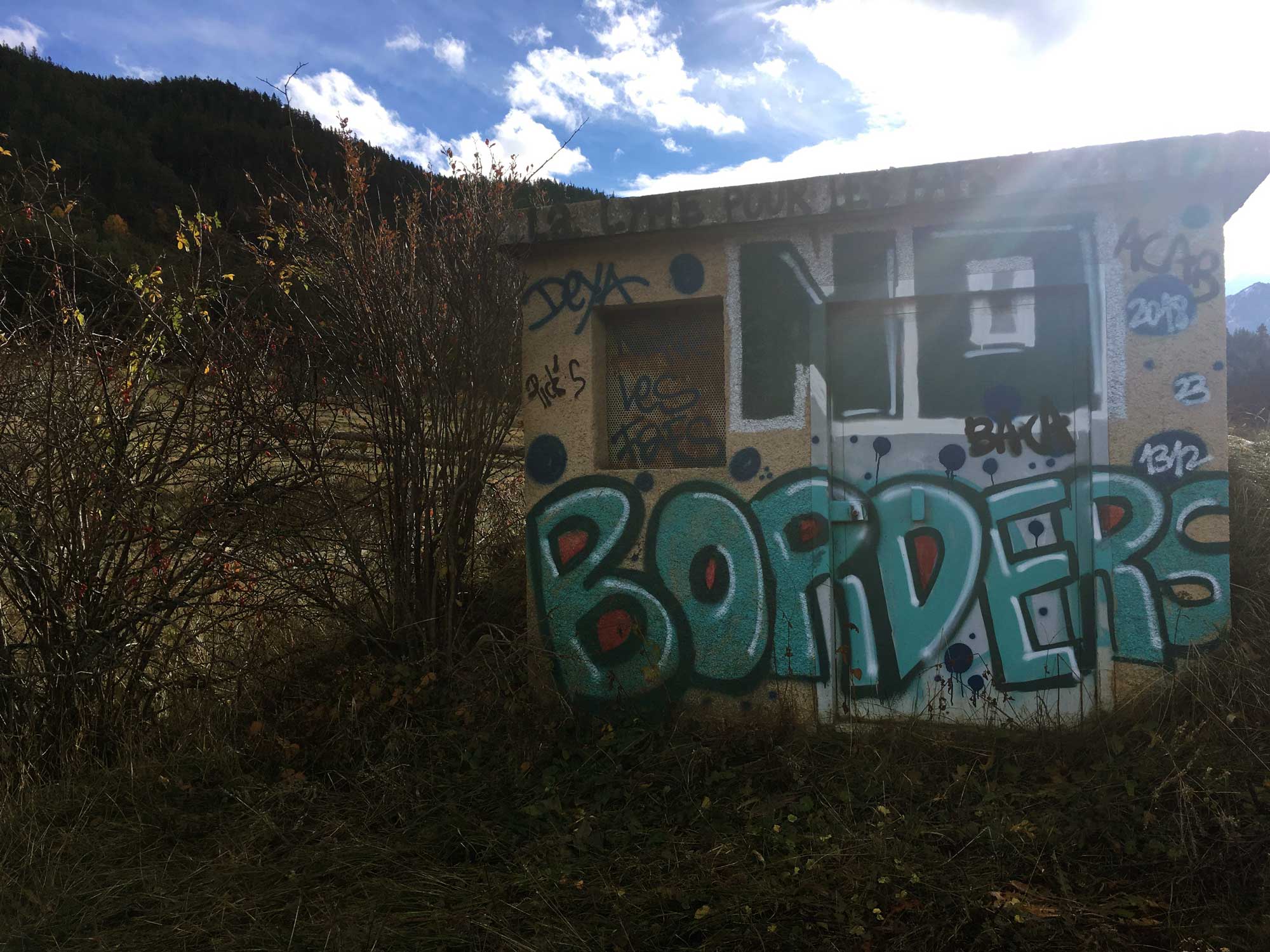
He had heard about the trial in Gap earlier that week. “If the laws were less strict,” he said, “it’d be easier to help out.” Still, he went on, “there are already people here, French people, who are struggling, who need work—so it’s complicated to say whom we should help first.”
The sense that immigrants strain finite resources and deprive citizens of jobs underscores anxiety about migration across Europe and beyond. But economists say such fears are unsubstantiated and overblown: Migrants residing in France illegally can’t work legally by definition, and often take under-the-table jobs in the service industry that actually fuel growth; no concrete evidence indicates that legal residents are a detriment to the economy. In July, economists from France’s National Center for Scientific Research published a comprehensive macroeconomic study assessing three decades of migration flows in Europe, based on data from Eurostat and the OECD from 1985 to 2015. The study, which focused on Western Europe, revealed that the flow of permanent migrants has had a net positive effect on national economies and even on employment levels. Asylum-seekers, they concluded, do not appear to negatively impact the public finances of host countries, either.
But those statistics are often lost in the impassioned debates over cultural identity and national security that have swept Europe in recent years, enabling populist parties to use migration to advance xenophobic agendas.
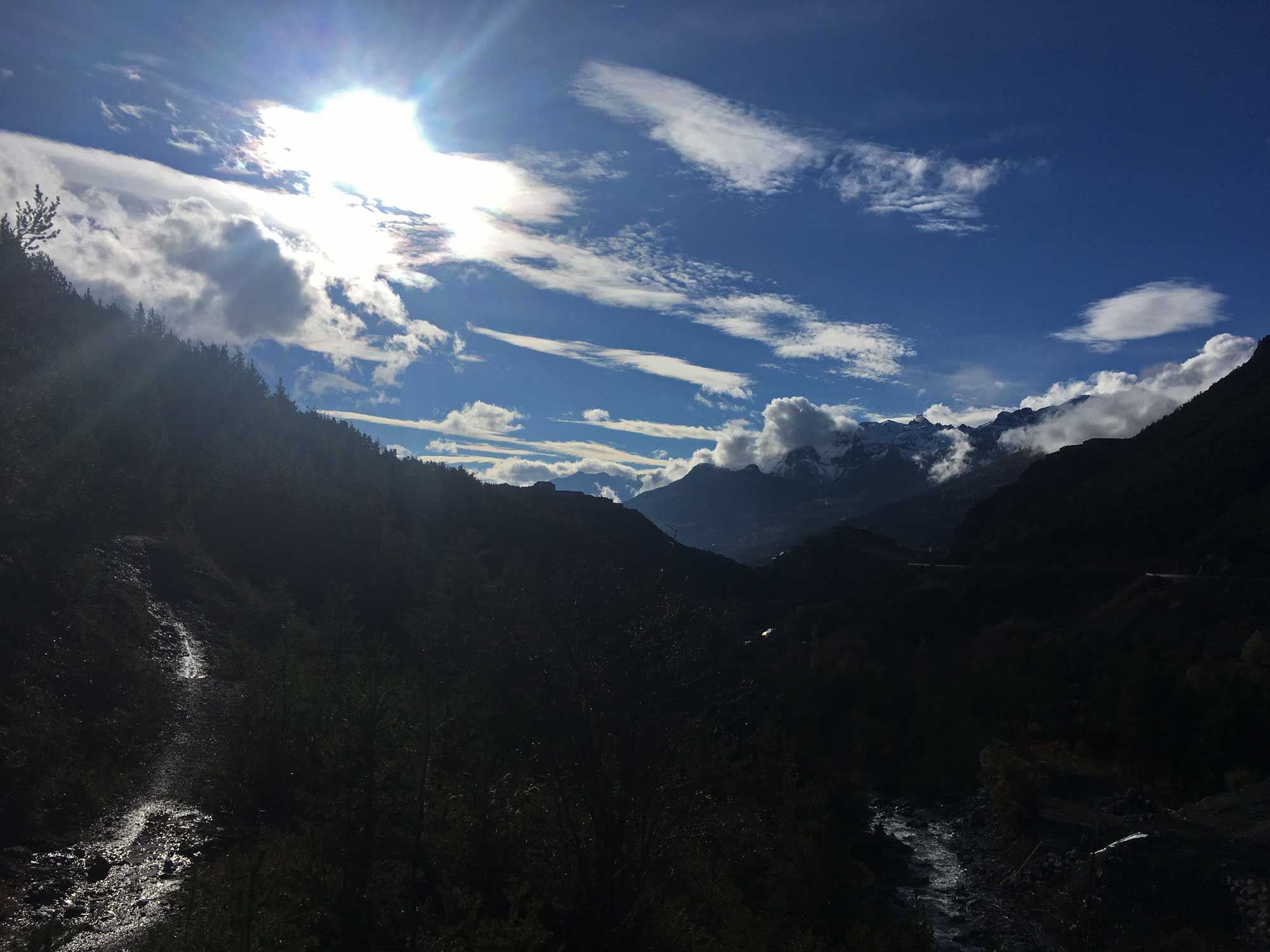
On my last morning in Briançon, I went for a run, heading toward the windy mountain trails, electric with the bright reds and yellows of autumn. An older man taking a morning walk was standing with binoculars looking at the woods. “Did you hear that?” he said. I paused—someone was yelling out, and it sounded like it was coming from the trails. I nodded. “If you ask me, those don’t sound like cries in French.” I guess not, I responded. “Do you think it’s a ‘black’?” I shrugged, somewhat taken aback by his language. “The other day I saw five come through, running in,” he said, adding that they’ve been fewer and farther between, as the police crack down. We chit-chatted before I continued onto the trails.
I ran into him again at a lookout point as I was heading back. “It’s beautiful here,” I said, mentioning that I was from out of town, here for a research project about migration. He raised his eyebrows, saying, “at first we welcomed them, but now it’s getting out of hand. I’m not saying we should leave them to die, but a lot of them don’t need to be coming.” West Africa is the “richest part of the continent,” he added, sounding incredulous. He searched my face for a reaction before saying, “I’m not against them. But at a certain point, enough is enough.”

